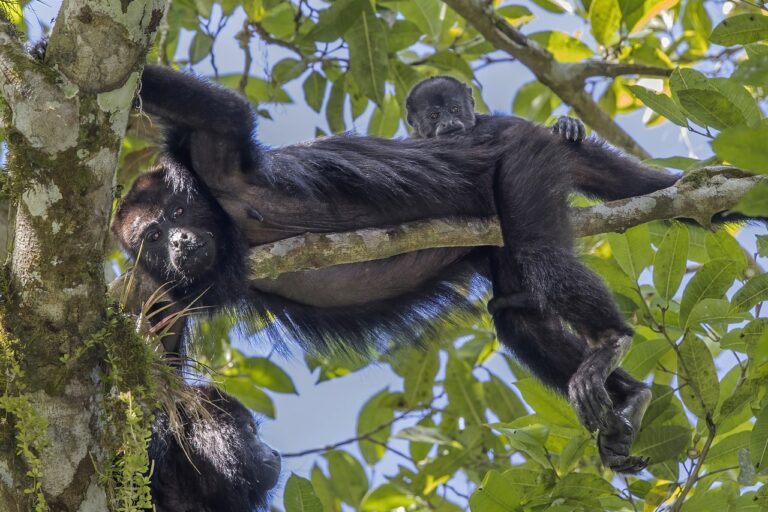- Crimes against wildlife increasingly threaten biodiversity in Latin America, which is home to 40% of the world’s plant and animal species.
- Between 2017 and 2022, almost 2,000 wildlife seizures and poaching incidents were recorded in the region, according to a recent report. The analysis looked at poaching and trafficking covered in the media in 18 countries across Hispanic America.
- The incidents involved more than 100,000 wild animals and birds, a vast majority of them live, belonging to nearly 700 species; reptiles represented more than half of the seized wildlife.
- The report calls for increased resources to fight wildlife crimes, better law enforcement and strengthening cooperation between countries in the region to combat wildlife crimes.
From the glacial fjords of Chilean Patagonia to the beaches and mountains of Baja California, Hispanic America, representing Spanish-speaking countries in South and Central America and the Caribbean, is a biodiversity treasure trove. These include colorful macaws, showy iguanas, gaudy poison frogs and charismatic cats — animals so beautiful that people want to own them as pets.
A recent report throws light on what this desire for exotic pets means for biodiversity in Hispanic America, where wildlife numbers are already nosediving due to large-scale deforestation and planned infrastructure projects. The report, published by the International Fund for Animal Welfare (IFAW), examines seizure and poaching incidents in Hispanic America over a six-year period and provides the first region-wide analysis of illegal wildlife trafficking, a key contributor to biodiversity loss. Most of the trafficked animals supplied the global demand for wild pets.
With detailed analyses of wildlife crimes in 18 countries, the report gives a “whole picture” of the region,” says Polen Cisneros, project manager for the wildlife crime program at IFAW. “My idea was to have the first report that had all the baseline information, which people can easily access online and read about it, so we are more informed of what’s actually happening in the region.”

Cisneros and her team scoured through media reports, published between January 2017 and December 2022, on wildlife seizures and poaching incidents in Hispanic America. From each media report, the researchers extracted the date of the incident, its country and location, the number of individual animals involved, the geographic origin of the animals, their taxonomic classifications and the transit mode and destination. They also looked at entries in the Law Enforcement Management Information System (LEMIS), a U.S. wildlife trade database, to identify key ports of entry of illegal wildlife shipped from Hispanic America.
The report identified 1,945 seizure and poaching incidents involving 102,577 reptiles, birds, mammals and amphibians belonging to at least 690 species. More than half of the species (363) were only protected by domestic laws and lacked protection under the Convention on International Trade in Endangered Species of Wild Fauna and Flora (CITES). Of those, 40 were endangered and 13 critically endangered, according to the IUCN Red List.
“Wildlife trafficking in Hispanic America hasn’t really gotten the same level of coverage and attention as wildlife trafficking in Africa, which is likely driven by Africa having more iconic species being trafficked,” says Faith Hornor, program director of wildlife crimes at the Center for Advanced Defense Studies (C4ADS), a U.S.-based nonprofit tracking transnational organized crime networks. “But that doesn’t mean that wildlife crime in Latin America doesn’t exist — in fact, the numbers are quite alarming.”
‘Eye-opening’ trends in illegal wildlife trafficking
More than half of the wildlife seized were reptiles (59%); the numbers are explained by two major seizure incidents from Mexico in 2020, involving nearly 30,000 mud turtles (genus Kinosternon) and musk turtles (genus Sternotherus). Reptiles are trafficked to supply the domestic and international pet trade; for their skin, meat or eggs; for taxidermy; and for use in traditional medicine.
Freshwater turtles and tortoises were the most seized reptiles, with mud turtles, mata mata turtles (style=”font-weight: 400;”>Chelus fimbriata), Chaco tortoises (Chelonoidis chilensis) and Galápagos tortoises (C. niger) topping the list. In some cases, reptile eggs were smuggled to be hatched, and the hatchlings falsely sold as captive-bred individuals. Among lizards, the green iguana, an exotic pet that has become a nuisance in some parts of the world, was the most seized.

Birds, which represented more than a quarter (28%) of the animals seized, topped the list of seizures in most countries. Psittacids (holotropical parrots) and songbirds, trafficked for the pet trade, topped the list. Mammals, representing 4% of all seized animals, were mainly traded for bushmeat and included deer, rodents such as lowland pacas (Cuniculus paca) and capybaras (Hydrochoerus hydrochaeris), tapirs, armadillos and sloths.
Primates prominently featured on the list of seized mammals, with eight species listed on CITES Appendix I, which prohibits commercial trade in these species. These included the Yucatán howler monkey (Alouatta pigra), the Central American squirrel monkey (Saimiri oerstedii) and three species of tamarins (genus Saguinus).
Mexico, Colombia, Argentina, Peru and Bolivia were the top five countries with the most reported seizures and poaching incidents, with Mexico alone responsible for more than a quarter of them. In the case of Mexico, Cisneros attributes these high numbers to the country’s higher capacity to monitor the trade and journalists to report on it. Most animals were smuggled by road, stuffed in tiny bags and suitcases and loaded onto passenger buses to escape being caught.
What struck Cisneros most, she says, was that nearly 92.5% of the seizures in Hispanic America were live animals, indicating they were destined for the pet trade. “That’s obviously eye-opening,” she says. “There’s a lot of deaths of animals due to the lack of care and the stress of trafficking. … It poses a really big threat of spreading zoonotic diseases, and nobody wants another pandemic.”
Unlike wildlife from Africa and Southeast Asia, which are trafficked across continents, a sizable proportion of wildlife trafficked in Hispanic America catered to domestic demand, spurred by the age-old practice of having wild pets in the region. Only a fraction (2.6%) of all seizures were destined for or seized in the U.S., Europe and Asia and mostly involved rare or endemic species. Data from LEMIS showed that El Paso, Nogales and Dallas/Fort Worth, all of them in U.S. states that share a border with Mexico, received the most illicit shipments of wildlife.
“I always thought of Latin America as a source region, but actually, we’re also a demand region,” Cisneros says. “This is an international problem, but it’s also a local and regional problem.”
The broad trends indicated in IFAW’s report coincide with the findings of a 2021 report published by C4ADS that looked at illegal wildlife trafficking through air transit across Latin America and the Caribbean between 2010 and 2020. The report also looked at media coverage of seizures at airports and found that trafficking networks in the region were tied to 53 countries, with live animals accounting for 40% of seizures. Mexico, Brazil and Colombia topped the list of countries with the most seizures, and a big portion of trafficked wildlife was destined for the pet trade.

The analyses of both reports, which rely on publicly available data, “only represents successful intervention efforts or failed trafficking events that were also reported [in the media] and were picked up by the analysts doing the research,” Hornor says. “So it’s really just a small portion of the scale of trafficking that’s going on.”
Species need stronger law enforcement and monitoring
This “tip of the iceberg” data, as Cisneros calls the report’s findings, is already alarming for countries to act together and stop crimes against wildlife that push vulnerable species toward extinction and cause greater ecological damage such as increased risks of zoonotic diseases and loss of ecological functions such as seed dispersal.
According to Ciscneros, major hurdles to tackling wildlife crime include the lack of enforcement of existing laws due to a lack of resources and rampant corruption, followed by inconsistent penalties, legal loopholes and weak cross-border cooperation. “It goes back to wildlife trafficking being a low priority in comparison to other types of crimes,” she says. “Unfortunately for animals, this region has a long way to go when it comes to harmonizing their policies and having resources to fight this crime.”
“It’s the perfect storm,” Hornor says. “Having corrupt actors that are willing to move products, or having systems that aren’t properly staffed for someone to be able to process all of this, and that also creates an exciting opportunity for criminal actors to move products successfully.”
The IFAW urges countries in Hispanic America to adopt the commitments of the 2019 Lima Declaration on illegal wildlife trade, such as strengthening domestic laws that address wildlife crime, strengthening criminal justice responses, raising awareness and eradicating consumer demand for wildlife. It also urges countries to improve their monitoring and investigations of wildlife crime, increasing surveillance for zoonotic diseases and building facilities for rescue and rehabilitation of seized wildlife.
Wildlife trafficking is currently a high-profit, low-risk business. One way to create a big blow to traffickers, Hornor says, is to up the risks for them and reduce their profits. “If you make the costs high, whether that’s the actual cost to traffic, paying someone off becomes higher or harder, or the risk of getting caught or the jail time going up, the benefit of whatever they’re receiving back in terms of profit is not going to be worth it at some point.
“It takes demand reduction, supply protection and investigations together to solve this issue, and that continued pressure across the supply chain to prevent a catastrophic event,” Hornor says.
Banner image: A mother and infant Yucatán howler monkey from Guatemala. The species is among the eight CITES Appendix I listed primate species trafficked in Hispanic America. Image credits: Charles J. Sharp – CC BY-SA 4.0







